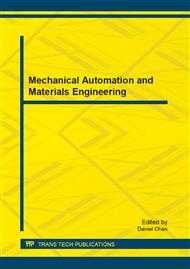p.10
p.14
p.19
p.24
p.28
p.33
p.37
p.42
p.46
Calculation and Simulation Azimuth Hydrostatic Thrust Bearing of a Large Alt-Azimuth Telescope
Abstract:
The use of hydrostatic bearing for support of telescope offers a number of potential performance advantages, but the structure parameter of bearing is the main factor which influence the bearing. The temperature rise of bearing is also important for the stiffnees of the telescope mount.In addition to the known benefit of mount stiffness and tracking accuracy from exceedingly low friction, the hydrostatic bearing provides a wide range of geometric possibilities for large telescopes [1].This paper analyzes various familiar hydrostatic bearing for the azimuth and elevation axes of telescope.Theoretical calculation and simulation show that the performance of bearing meets telescope’s design requirements.The principle and process of this work and Finite Element Analysis (FEA) are introduced in detail. According to the CFX result, the structure parameter and performance of bearing ,temperature field and pressure distribution have obtained.
Info:
Periodical:
Pages:
28-32
Citation:
Online since:
August 2013
Authors:
Price:
Сopyright:
© 2013 Trans Tech Publications Ltd. All Rights Reserved
Share:
Citation:


